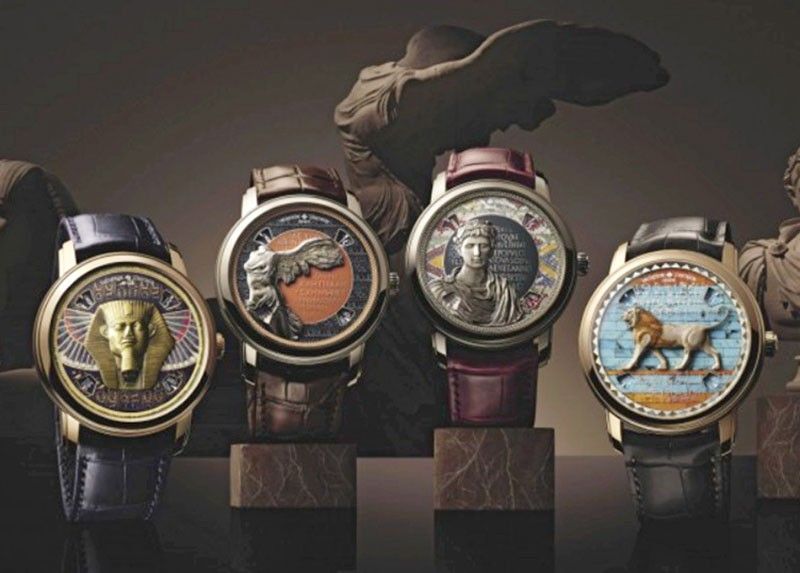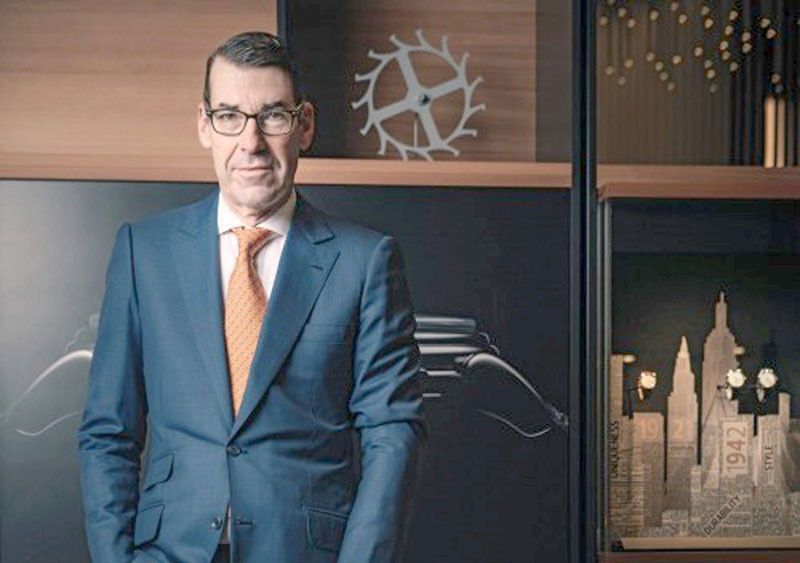Art, beauty, and time


SINGAPORE — How do you measure time? Time is a continuous series of past, present, and future events, and Vacheron Constantin, the luxury watchmaker, has had a lot of it, having been making their exquisite timepieces since 1755. They have had the time (in fact, centuries) to perfect their craft and artistry on devices that fittingly focus on timekeeping.
In the 20th century, wristwatches started appearing as jewelry for ladies, supplanting pocket watches. It was considered an upheaval in the making of timepieces. Shortly after, the wristwatch became democratized and evolved into an essential tool for daily life. Aside from its usefulness, one’s watch was also a vehicle for a person’s creative self-expression. Due to this development, Vacheron Constantin, already known for its impeccable quality, innovated their special “form” watches and its embellishments. They started incorporating artistic crafts such as the techniques of guilloché, enameling, miniature painting, gem-setting, lacquering, openworking, etc.
I had the pleasure of seeing firsthand their history of watchmaking unfold in an exhibit aptly titled “The Anatomy of Beauty” at the ArtScience Museum, Marina Bay Sands in Singapore. Held in celebration of the reopening the Vacheron Constantin boutique, also at the Marina Bay Sands, the fascinating event is open to the public until November 2.
“The Anatomy of Beauty” displays Vacheron Constantin’s horological mastery combined with the decorative arts. This means the anatomy of each timepiece they create has the two elements of astonishing aesthetics and perfect scientific arrangement. The timepieces from the maison encompass over 200 years of creations and technical excellence. Christian Selmoni, style and heritage director, who helped curate some of the pieces that went into the exhibit, explains that “the idea was really to create an experience in which we could mix the anatomy of beauty that we have in modern watches together with our heritage pieces coming from private collections. We also showcase our consistency and legacy.”
About 60 watches are available for viewing in the ongoing exhibition.
The exhibit is divided into three experiences: The first part is Our Heritage: A Legacy of Precious Time, which welcomes you into Vacheron Constantin’s watch universe and tells the story of the brand’s exceptional history. A standout is a pocketwatch from 1822, made with finely chased yellow gold set with amethysts and a guilloché gold dial. The shell style is an excellent illustration of the Rococo period, and is inspired by the Mannerist grottos of Tuscany in the 16th century.
Fast forward to 2005 with the Tour de l’lle. To celebrate its 250th anniversary, Vacheron Constantin presented this watch with 16 complications on a double-face display. It is considered to be one of the most complicated wristwatches in the world. A very small series of seven pieces was produced. It took the maison’s design engineers and watchmakers over 10,000 hours of research and development to create this sheer masterpiece of horological technique. I also found the ladies’ manchette watch with a square case in 18k red gold, entirely made up of half-spherical links, a beauty.

The Historiques 222, which is iconic of the 1970s, with a monobloc tonneau-shaped case topped with a grooved bezel, has returned. Its integrated strap showcases its robust, functional, and sporty spirit with timeless elegance. The case is decorated with a Maltese cross at 5 o'clock and has an open case back.
The second experience is The Anatomy of Beauty. Here you will witness the attentiveness to detail given by the luxury watchmaker. Huge magnifying glasses showcased the meticulousness and detail that goes into a Vacheron Constantin timepiece. A master craftsman was also on hand to impressively demonstrate the skill needed to create a watch. Not to be missed is the Metier’s d’Art series that pays tribute to great ancient civilizations. The Persian empire of Darius the Great; the golden age of Ancient Egypt; the Hellenistic period of Ancient Greece; and the rise to power of Augustus, the first Roman emperor, are the historical anchor points that these watches were inspired by. It is a dazzling collection done in collaboration with the Louvre based on their ancient collections.
Other highlights include the Egerie Moon Phase and Egerie Self-Winding watches with two versions: a moon or date variation; and the Overseas Tourbillon Skeleton, which is stunning inside and out. The watch is described as “beautifully streamlined with its entirely openworked movement; sophisticated with its robust case; rigorously disciplined with its tourbillon-driven movement.”
The last part and experience of the exhibit is called Science and Complications. Now, this is where one has an immersive journey into the heart of Vacheron Constantin, In watchmaking, a complication is any function other than the display of time. Complications can either be very simple or very sophisticated. For Vacheron Constantin, their five horological complications consists of tourbillon, split-second chronograph, retrograde, perpetual calendar and minute-repeater. They collaborated with The Cityshake Art Studio to depict these complications though physical and digital artworks. I participated in an interactive activity to “skeletonize” a watch, where you can open it up and see it piece by piece. It is an eye-opening experience and makes you realize what really goes into the making of these complex devices.
Those who have a fine appreciation for watches will understand the skill and artistry brought into the creation of each. Through time, Vacheron Constantin has proven that watches are not only a practical tool but also a technological marvel and, yes, art in itself.

* * *
Tickets can be booked on the ArtScience Museum website at
www.marinabaysands.com/museum/exhibitions/vacheron-constantin.html. Follow their IG @vacheronconstantin.
You may follow the author on IG @toda_monique.



















